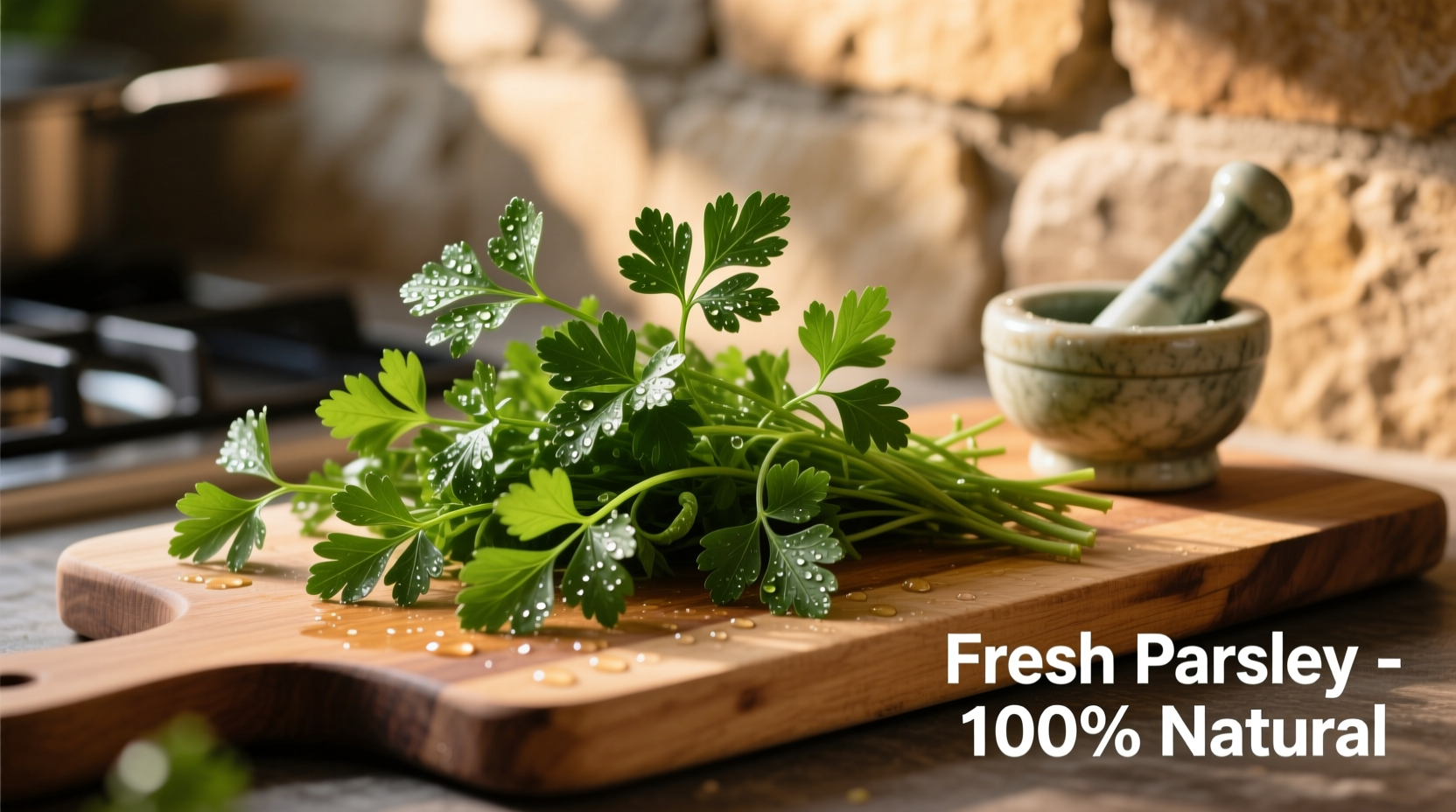Parsley is primarily used as a culinary herb in global cuisines, serving as both a garnish and essential flavor component. Fresh curly and flat-leaf varieties enhance dishes from Mediterranean tabbouleh to Brazilian chimichurri, while dried parsley works in soups and sauces. Beyond cooking, parsley has historical medicinal applications and provides notable nutritional benefits including vitamins K, C, and A.
Discover exactly how to maximize this versatile herb in your kitchen with practical techniques backed by culinary science. Whether you're a home cook or professional chef, understanding parsley's diverse applications transforms ordinary dishes into extraordinary creations. This guide reveals evidence-based usage methods that go far beyond the plate decoration many mistakenly assume is its only purpose.
The Culinary Powerhouse: Practical Parsley Applications
While often relegated to a plate garnish, parsley's true value emerges when treated as a primary flavor ingredient. Professional chefs consistently reach for flat-leaf (Italian) parsley when building flavor foundations due to its robust, clean taste compared to the milder curly variety. The herb's natural compounds interact with fats and acids to create complex flavor profiles that enhance rather than overpower dishes.
According to the USDA National Nutrient Database, just one-quarter cup of fresh parsley delivers 233% of your daily vitamin K requirement, 17% of vitamin C, and 9% of vitamin A. This nutritional profile makes it more than just flavor—it's a functional ingredient that contributes meaningful health benefits when consumed regularly.
Parsley Varieties and Their Specific Culinary Roles
| Variety | Flavor Profile | Best Culinary Applications | Storage Duration |
|---|---|---|---|
| Flat-leaf (Italian) | Bold, peppery, earthy | Sauces, stews, marinades, tabbouleh | 10-14 days refrigerated |
| Curly parsley | Milder, slightly bitter | Garnishes, soups, stocks, salads | 7-10 days refrigerated |
| Japanese parsley | Stronger, more pungent | Asian stir-fries, miso soups | 5-7 days refrigerated |
Understanding these distinctions prevents common culinary mistakes. Flat-leaf parsley withstands cooking better, making it ideal for dishes requiring extended simmering, while curly parsley's texture holds up better as a fresh garnish. The Japanese variety, less common in Western kitchens, offers a stronger flavor profile suited to bold Asian preparations.
Historical Evolution of Parsley Usage
Parsley's journey from ancient medicinal plant to kitchen staple reveals fascinating cultural shifts. Originally cultivated in the Mediterranean region, parsley held symbolic significance in Greek and Roman cultures—wreaths of parsley adorned victors at the Isthmian Games. During the Middle Ages, European monasteries documented parsley's use in treating digestive issues and kidney problems.
The herb's culinary adoption accelerated during the Renaissance when French and Italian chefs began incorporating it into sauces and stuffings. By the 18th century, parsley became a standard component in the French "mirepoix" flavor base alongside onions and carrots. This historical progression demonstrates how parsley transitioned from purely medicinal applications to becoming an essential culinary ingredient.
Maximizing Flavor: Professional Preparation Techniques
Proper preparation dramatically affects parsley's flavor contribution. Always wash parsley thoroughly in cold water and dry completely before use—wet herbs won't chop cleanly and dilute flavors. When chopping, use a sharp knife on a wooden cutting board to prevent bruising that releases bitter compounds.
For maximum flavor extraction, add flat-leaf parsley toward the end of cooking for fresh applications, or at the beginning when making stocks where longer simmering is beneficial. The stems contain concentrated flavor compounds—finely chop and use them in sauces, soups, or pesto rather than discarding. Professional chefs often create parsley oil by blending leaves with neutral oil and straining, preserving the herb's essence for months.

Contextual Boundaries: When Parsley Isn't Appropriate
Despite its versatility, parsley has limitations. Its delicate flavor gets overwhelmed in heavily spiced dishes like Indian curries or robust Mexican moles where stronger herbs like cilantro work better. Parsley's chlorophyll content can turn brown when exposed to heat for extended periods, making it unsuitable as the sole green element in long-simmered tomato sauces.
Certain medical conditions require caution with parsley consumption. The herb contains apiol, which in large quantities may affect kidney function. Pregnant women should moderate intake as excessive parsley consumption has been historically associated with uterine stimulation. Always consult healthcare providers about dietary changes when managing specific health conditions.
Preservation Methods That Maintain Quality
Extend parsley's shelf life with these evidence-based techniques:
- Refrigeration: Store in a glass of water like flowers, covered with a plastic bag (changed every 2 days) for up to 2 weeks
- Freezing: Chop and freeze in ice cube trays with olive oil for ready-to-use cooking portions
- Drying: Hang small bunches upside down in a dark, well-ventilated space (retains 60-70% of flavor compounds)
- Pesto: Blend with oil and freeze in portions for year-round use
Research from the Journal of Food Science shows that freezing parsley in oil preserves volatile compounds better than air-drying, maintaining more of the fresh herb's characteristic flavor profile. Avoid storing parsley near ethylene-producing fruits like apples or bananas, which accelerate spoilage.
Common Mistakes That Waste Parsley's Potential
Many home cooks miss opportunities to maximize parsley's contribution:
- Using only leaves while discarding flavorful stems
- Adding at the wrong cooking stage (too early for fresh applications)
- Confusing varieties for inappropriate dishes
- Using dried parsley as direct substitute for fresh (use 1/3 the amount)
- Improper storage leading to rapid spoilage
Professional kitchens treat parsley as a primary ingredient rather than an afterthought. Incorporate chopped parsley into compound butters, mix into salad dressings for freshness, or blend into mayonnaise for vibrant sandwiches. The herb's natural acidity balances rich dishes—try folding chopped parsley into mashed potatoes or omelets for instant flavor elevation.











 浙公网安备
33010002000092号
浙公网安备
33010002000092号 浙B2-20120091-4
浙B2-20120091-4